|
LITTLE BIGHORN BATTLEFIELD National Monument |
 |
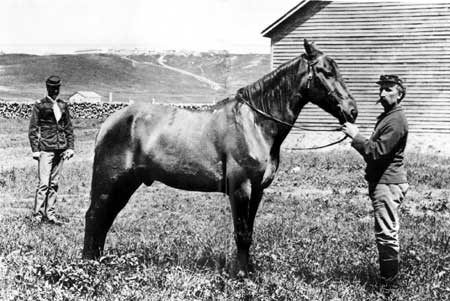
Captain Keogh's claybank gelding, Comanche, was the only survivor of the battle
for the U.S. Army. Near death with arrow and bullet wounds, the horse was found
on the battlefield on June 27 and, with Reno's wounded soldiers, was taken
aboard the steamer Far West for the journey back to Fort Lincoln. Comanche's
remains are now enshrined at the University of Kansas.
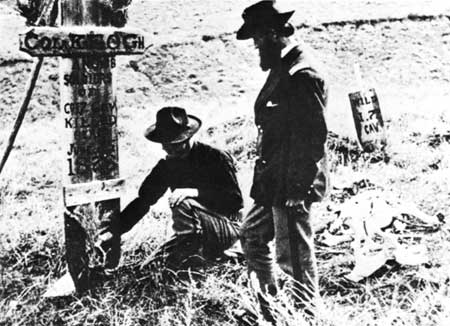
In the summer of 1877, one year after the battle, Captain Keogh's reconstituted
Company I returned to the battlefield to reclaim the bodies of the officers and
rebury those of the enlisted men. Keogh's marker stands on the spot where he fell.
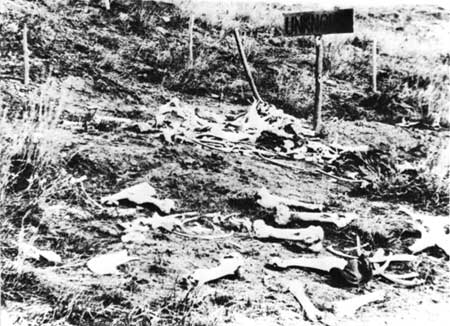
Horse bones still littered the field when Company I returned. The wooden stakes
mark the graves of the slain.
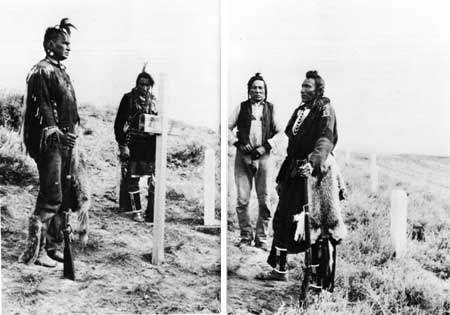
Custer's Crow scouts visit Custer Battlefield about 1913. Left to right:
White-Man-Runs-Him, Hairy Moccasin, Curley, Goes Ahead.
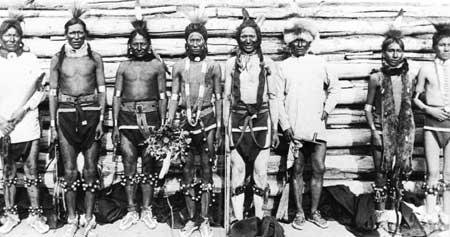
Sioux warriors typical of those who fought Custer photographed in dance
costumes at Standing Rock Agency in 1879.

|
|
Last Modified: Sat, Sep 28 2002 10:00:00 pm PDT |


